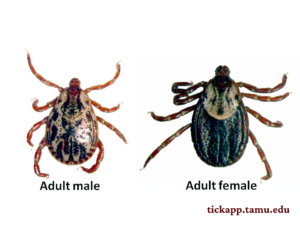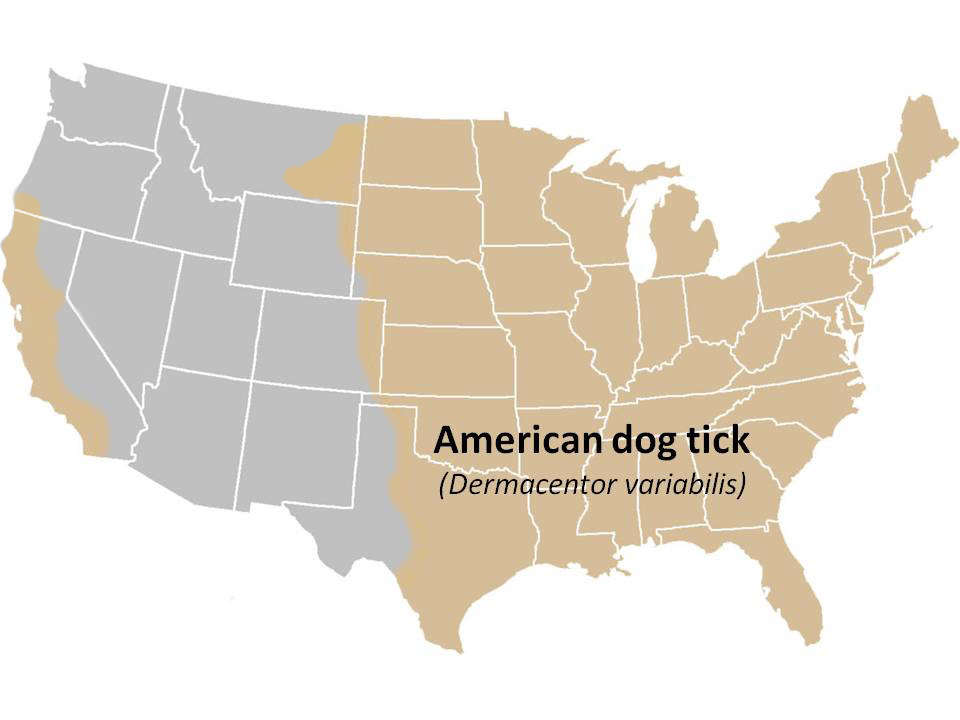
Species: Dermacentor variabilis (Say)
Family: Ixodidae (Acari)
Description: American dog tick males vary in ornation presenting a pale brown to grey base color overlayed with a creamy-yellow and mottled pattern. Males average 1.43 mm long and 1.01 mm wide, and the body shape narrows considerably towards the head. Adult females are longer than wide (3.8 mm long by 2.5 mm wide), present a dark brown body with a cream color dorsal shield or scutum, patterned with dark brown markings. Blood-fed females are capable of expanding their cuticle up to 15 mm long and 10 mm wide, and weights of engorged females may exceed 1 gram. Larvae are pin-head in size (measuring approx. 0.60 mm long by 0.40 mm wide) and are typically straw colored when unfed. Bodies of unfed nymphs are generally twice as large as larvae (0.9 x 0.8 mm, L x W), pale yellow-brown in color and topped with a brick-red colored scutum.

Distribution: In the US, the American dog tick ranges from the coastal Atlantic states south and westward to the Panhandle and Trans-Pecos regions of Texas, and northward to eastern and south-central Montana. Along the Pacific coast, this tick is present through the western half of California and may be found northward into areas of Oregon and Washington. This tick is also reported in parts of Canada and Mexico.
Hosts: Larvae and nymphs prefer small mammals including numerous rodent species, rabbits, cats, sheep, cattle, feral swine, and dogs. Adults prefer canids (coyotes & dogs), but are known to feed on cattle, horses, raccoons, oppossum, and humans.
Biology: The American dog tick exhibits a three-host tick life cycle. In warmer regions of its southern range all three stages may be active on hosts throughout the year with a pronounced increase of occurrence during spring. In northern climes, larvae and nymphs are active spring to autumn while adult questing appears to be highest in spring. Gravid females may lay from 4000-6500 eggs.
Associated Disease Pathogens: This species is considered the primary vector of Rocky Mountain Spotted Fever (RMSF), affecting humans and companion animals in the eastern, central, and southern US. This tick is also reported to transmit tularemia, tick paralysis, and has been found to experimentally transmit Anaplama marginale (anaplasmosis) to cattle, and Theileria equi to horses.
Similar Tick Species: Adults appear similar in appearance to the Gulf Coast tick (Amblyomma maculatum), but have shorter mouthparts and are usually somewhat darker in color.
